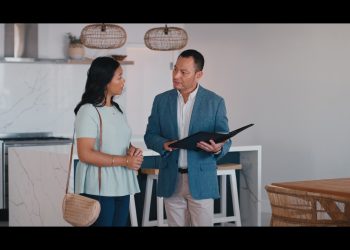When it comes to real estate, agents know that the longer a home sits on the market, the more challenging it can be to sell. In the most recent Secrets of Top Selling Agents webinar, Jim Remley showed listeners the best ways to market a property in “MERCHANDISING LISTINGS – How to Price, Package, and Position Listings to Sell Quickly.”
After starting to sell real estate at 19, Remley is now listed in the top 1 percent of REALTOR® agents nationwide. He is the principal broker/sales manager at John L. Scott Medford and Ashland, an accredited luxury home specialist and the author of three books. In this webinar, Remley shared the best tips for marketing a listing to sell as quickly as possible.
- Pricing
Remley opens the webinar by sharing with listeners that the market is beginning to shift from a seller’s market. While it hasn’t transitioned completely, it’s worth noting that inventory levels are rising. As a result, it’s important to target the right buyers from the beginning with a price that fits. Remley notes that agents have been told to list pricing at $100 under the $100K marks; however, he states that, by doing so, agents are actually squeezing themselves into a smaller market. Rather than typing in their minimum and maximum ranges, buyers often use the sliding scales provided by portal searches. If a seller is listing a home at $299,900 instead of $300,000, they’re limiting themselves to searches between $250,000-$300,000. However, with the latter, the listing will be accessible to those also searching between $300,000-$350,000. By increasing the price by just $100, sellers can reach an even larger audience.
Another point Remley makes is that there is currently a backlog of buyers. When buyers begin their search process, they’ll often sign up for notifications so they can be alerted when a new home that meets their criteria hits the market. Because of this, Remley stresses the importance of pricing a home right from the very beginning. This can be a great way to suggest to unrealistic sellers that they may be asking too much for their home. Let them know that they only have one chance to make a first impression—”no second bites of the apple.”
Similarly, Remley pushes sellers to create a “feeding frenzy” when pricing their home. If a seller’s home is worth $520,000, but more properties are selling at the $350,000-$500,000 price bracket than from $500,000-$750,000, Remley will often ask his clients to sell the home for slightly less than it’s worth in order to reach more buyers. He reminds sellers to “fish where the buyers are,” rather than trying to work in a higher bracket where they would likely be receiving fewer offers. However, he states that it’s always important to tell the sellers that it’s their decision.
- Packaging
After pricing, Remley shares with listeners that staging is another hugely important factor in quickly selling a listing. In fact, according to his stats, 81 percent of buyers stated that staging allowed them to visualize the property as their future home. Furthermore, 68 percent of staged homes sold for 9 percent more than an un-staged neighbor’s home. When suggesting staging to clients, Remley says that he always leaves the final decision up to the seller by saying something like, “When we stage, we’re helping the buyer create an emotional connection with the home. Can I give you some thoughts on what I think we might consider for staging your home?” The majority of the time, clients are interested in hearing what their agents have to say, since they’re the expert.
While many believe that staging means changing a home’s entire decorative scheme, Remley states that this isn’t true. Decluttering and cleaning are the two most important parts of staging a home. While this may seem like common sense to some, Remley shares that this isn’t always the case. To help combat this, he likes to create connections with local cleaning companies that he can recommend to already overwhelmed sellers. He also notes that many sellers forget that their home may have a distinctive (or even unpleasant) smell. This can be very off-putting to potential buyers. Since it’s a sensitive issue, Remley suggests saying something like, “If you’ve ever sold a car, what’s one of the first things you do? Wash it inside and out, right? When we put your home on the market, it becomes a product, just like your car.”
- Positioning
When writing a marketing description, Remley states that it’s important to speak the language of the buyers. Agents should be selling a lifestyle and not just a property. When potential buyers search through a list of properties, they’re working to eliminate the homes they believe will not be a good fit for them. Most already have specific criteria in mind (school district, number of bedrooms, etc.), so they’re working to sort through and find the homes that match those specifications. Because of this, Remley says that agents need to “rejection-proof” their ads. When agents create an amenities list advertisement, buyers are able to go through and exclude themselves if they don’t think the property is a good fit. Instead, by making ads slightly vague by broadly describing the number of bedrooms, square footage, etc., without giving any specifics, agents are able to push potential buyers to make the call for more information.
Another tactic Remley suggests is what he calls “feedback loops.” The idea is to let clients know that you’re collecting feedback about the price, condition and neighborhood of their home from agents and buyers who view the listing online. Once you receive this information, it’s important to deliver it to the sellers, but frame it in a way that’s constructive. For example, if the general consensus is that the price is too high, the response could be something like, “So the feedback we received is the asking price is too high. Now, we could do nothing in response, but that doesn’t seem to be working. If we make an adjustment and reposition the listing, I think we’ll be in a better position to receive some great offers. What would you like to do?” Then, it’s important to “gift bag” the change. For example, if the client agrees to reduce the price, you could offer to refresh the listing photos, rewrite the marketing description, re-market an open house and re-offer the home to interested buyers.
To learn more of Remley’s tips, you can join the Secrets of Top Selling Agents Facebook Group here. For more free real estate education, including best practices, visit the Secrets of Top Selling Agents website.
 Mark Mathis is VP of Sales for Homes.com. For more information, please visit marketing.homes.com.
Mark Mathis is VP of Sales for Homes.com. For more information, please visit marketing.homes.com.












I’m just curious, how many times do you think realtors get approached to sell a house that they know would not sell no matter what? Like bug infested homes and such. I ask because as a house investor I’m wanting to build relationships with realtors but don’t know what they would think of that. Would they be annoyed if I basically said hey if you have any houses you know you can’t sell just send them my way. Do you know if realtors hand off many houses knowing it’s not worth the effort?
Insightful.